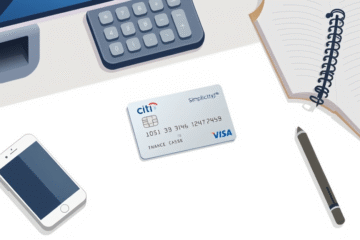Mastering the Credit Card Statement Basics
Credit Card management is a crucial aspect of maintaining financial health.
In this article, we will explore the significance of understanding your credit card statement.
By dissecting its various components, we aim to empower you with the knowledge to effectively monitor your spending, recognize interest charges, and avoid unnecessary fees.
Regularly reviewing your statement not only helps you stay on top of your finances but also enables you to make informed decisions that can enhance your overall financial wellbeing.
Why Reading Your Statement Matters
A credit card statement is a comprehensive summary of your credit card activity over a specific billing cycle.
Understanding your statement is crucial for cardholders as it helps track spending, payments, and any interest or fees incurred.
Key sections such as the account summary, payment due date, and transaction details provide vital information to manage finances effectively.
Decoding the Account Summary
The Account Summary section of a credit card statement provides a comprehensive overview of your credit card activity and is essential for effectively managing your financial health.
It includes details about your current balance, payments made, and new transactions, offering a clear picture of your spending patterns.
By closely monitoring elements such as your Previous Balance, payments, and credits, you stay informed about your financial standing and make necessary adjustments.
Transitioning to a breakdown of fees and interest charges allows you to identify unnecessary expenses.
The resulting new balance, calculated after considering all financial activities, aids in budgeting for upcoming expenses.
Understanding each component ensures you avoid surprise charges and remain proactive in your spending control.
- Previous Balance: Reflects the amount owed at the start of the billing cycle.
- Payments and Credits: Highlights funds paid and any credits to the account.
- New Balance: Represents the total amount due after all transactions.
Tracking Transactions and Activity
Tracking each transaction date, description, and amount on your credit card statement is crucial for managing finances and spotting discrepancies early.
It helps users maintain an accurate record of their spending habits and safeguard against potential fraudulent activities.
By reviewing this section thoroughly, you can ensure the transactions listed align with your authorized purchases and identify any unfamiliar charges promptly, which might indicate credit card fraud.
Additionally, keeping an eye on transaction details helps avoid overlaps and redundancies that could affect budgeting.
Here’s a simple breakdown of what a transaction table might look like, aiding in understanding this critical financial section:
| Date | Description | Amount |
|---|---|---|
| 05/01 | Grocery Store | 45.67 |
| 05/03 | Coffee Shop | 7.89 |
For further guidance on understanding credit card statements and sample transactions, you might find detailed resources at Discover’s guide insightful.
Understanding Interest Charges and Fees
Understanding the intricacies of your credit card statement involves recognizing various finance charges and fees, which can greatly influence your financial well-being.
The APR, or annual percentage rate, plays a crucial role as it dictates how much interest accrues on outstanding balances.
This figure, prominently displayed on your statement, represents the yearly cost of borrowing on your card and is typically found near the summary of transactions.
By grasping how the APR affects your finance charges, you can better anticipate your card’s overall cost.
For instance, if you hold a $1,000 balance on a card with an APR of 20%, you might incur $200 in interest over a year if not paid in full.
Moreover, credit card statements frequently include additional charges such as the late payment fee and the over-limit fee.
These fees can further inflate your costs beyond the standard interest rates, reinforcing the need for timely payments and careful management of spending limits.
An overlooked due date might result in a $35 late payment fee, while exceeding your credit limit could trigger an over-limit fee of a similar amount.
By closely examining your statement and staying aware of these details, you can develop strategies to avoid unnecessary expenses, fostering a more financially responsible approach.
For more insights on managing your credit card interest, check out Capital One’s Guide on Credit Card Interest.
Monitoring Payment Deadlines and Minimum Payments
The due date and minimum payment on your credit card statement are critical for maintaining financial health.
Missing the due date can result in late fees, which can negatively affect your credit score.
If payments are delayed long enough, they could be reported to credit bureaus, staying on your report for up to seven years as noted by Consumer Financial Protection Bureau.
Setting reminders on mobile devices and automating payments through your bank are effective ways to manage deadlines, ensuring that you avoid late fees.
Moreover, by consistently ensuring you meet at least the minimum payment, you can protect yourself from penalty APRs, which usually increase your interest rate significantly, as indicated by Capital One’s advice.
Quick Tips for Ongoing Statement Review
Developing a routine to review every month your credit card statements is crucial for maintaining financial health.
By consistently checking your statements, you can spot fraudulent charges early, ensuring any errors are promptly addressed.
Paying attention to every detail allows you to control spending and avoid unnecessary fees.
Additionally, you gain insights into spending habits, helping you budget better and enhance financial planning.
Incorporating this practice into your monthly routine will make sure you’re never caught off guard by unexpected charges.
Remember, staying diligent in reviewing your statements every month empowers you to make informed financial decisions Keep your finances in check and stay proactive about your financial well-being.
In conclusion, taking the time to understand your credit card statement is vital for smart financial management.
By staying informed and proactive, you can avoid pitfalls and maximize the benefits of your credit card.



0 Comments